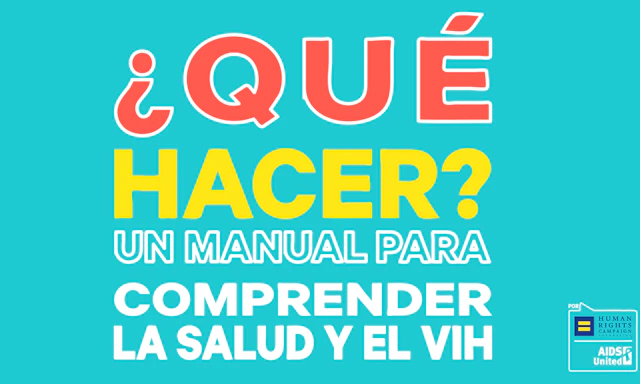
Cookies in use
HRC’s Guide to Getting It Right: Reporting about HIV

This guide is meant to be a starting point for reporters, journalists, bloggers, and community advocates interested in covering the the HIV epidemic both accurately and compassionately.
Reporting about the HIV epidemic and its impact on lesbian, gay, bisexual, transgender, and queer (LGBTQ+) people can be difficult for those unfamiliar with the current realities of HIV, but doing so is an essential part of debunking common myths, reducing stigma, and giving voice to people living with and affected by HIV.
Well-informed reporters are uniquely positioned to spark and sustain ongoing dialogues about LGBTQ+ generally and HIV specifically. This guide is meant to be a starting point for reporters, journalists, bloggers, and community advocates interested in covering the HIV epidemic both accurately and compassionately. We encourage you to seek out additional resources to expand your knowledge even further.
Tip 1: Avoid conflating HIV and AIDS. They two are related but should not be used interchangeably.
The Human Immunodeficiency Virus (HIV) works by attacking the body's immune system, which is crucial to fighting off infections and diseases. If left untreated, HIV can lead to an Acquired Immune Deficiency Syndrome (AIDS) diagnosis. Not all people living with HIV will receive an AIDS diagnosis, but all people who’ve been diagnosed with AIDS are living with HIV. To that end, the term “HIV/AIDS” is misleading because it implies that HIV and AIDS refer to the same thing, which is not true. Unless you’re specifically talking about an AIDS diagnosis in your reporting, stick to talking about HIV, and if you are talking about both, use “HIV and AIDS” rather than “HIV/AIDS”.
Tip 2: Recognize that while HIV may be more prevalent among LGBTQ+ people - specifically young, gay and bisexual men and transgender women - anyone can contract or transmit HIV. Be careful of implying otherwise.
Although rates of HIV are disproportionately higher among members of the LGBTQ+ community because of factors largely out of their control, HIV is by no means confined to LGBTQ+ people. Anyone—regardless of sexual orientation, gender identity, gender expression or other factors—can acquire HIV. Implying that HIV is a “gay” or “LGBTQ+” disease is medically untrue and only serves to perpetuate harmful stereotypes about people living with HIV and members of the LGBTQ+ community.
Tip 3: Understand the importance of and difference between PrEP and PEP. Avoid perpetuating false narratives about either strategy.
PrEP stands for Pre-Exposure Prophylaxis, and it commonly refers to the once-daily pill regimen that can keep someone HIV-negative. PrEP describes a more general method of HIV prevention and other drugs will likely be used for PrEP in the near future. As the name implies, PrEP is used prior to exposure to HIV.
PEP stands for Post-Exposure Prophylaxis, and it commonly refers to the use of antiretroviral medications immediately after a single high-risk event, such as condomless sex with a partner whose HIV status you do not know. Much like PrEP, PEP describes a more general method of HIV prevention, and several different antiretroviral medications can be used for PEP. As the name also implies, PEP is used after exposure to HIV.
Avoid the temptation to exaggerate the alleged controversy surrounding PrEP. When taken as prescribed, PrEP has been shown to be safe and highly effective in preventing HIV acquisition. Uptake among LGBTQ+ people is on the rise, and PrEP enjoys near-universal support from public health organizations such as the Centers for Diseases Control and Prevention and the World Health Organization, and community-based organizations such as HRC.
Tip 4: Broaden coverage to include structural factors that often increase the spread and stigma of HIV, such as poverty, racism, and HIV criminalization.
In more than 30 states, people living with HIV can be tried and imprisoned simply because a partner accuses them of withholding their HIV status. Many of these laws are left over from the 1980s and 90s and do not take into account the use of PrEP or condoms. Nor do many of them take into consideration whether a person living with HIV is “undetectable.” By consistently taking their medication, people living with HIV are able to lower the amount of HIV in their bodies to undetectable levels. While undetectable, a person living with HIV remains in good health and cannot transmit the virus to a partner. The potential impact of HIV criminalization laws should be factored into coverage of HIV non-disclosure.
Tip 5: Include the voices of people living with HIV in your reporting but remember people living with HIV are more than their diagnosis.
People living with HIV lead full and complex lives much like the rest of us. They aren’t simply vectors for disease or tragic stories meant to elicit sympathy; they’re real people who come from all walks of life. Look for opportunities to highlight other aspects of a person’s identity in your coverage.
Tip 6: Avoid using terms that are not only outdated and inaccurate but may also stigmatize people living with and affected by HIV. For example, consider using:
“Person living with HIV” vs. “HIV-positive person” or “HIV patient”
“AIDS” or “stage 3 HIV” vs. “full-blown AIDS”
“HIV transmissions” or “HIV cases” vs. “HIV “infections”
“Condomless sex” vs. “unprotected sex”
Focusing the reader’s attention on what is true nowadays — instead of what may have been true at one point in time — is a much more effective and meaningful way to talk about the current realities of HIV. It will also bring simplicity and clarity to an otherwise complicated topic.
This resource references GLAAD’s Guide for Reporting in a New Era of Prevention & Treatment, which has additional information on and best practices for reporting about HIV. It is not a substitute for sound medical advice — and the examples throughout it don’t cover every situation! We encourage you to seek out additional resources from other community advocates and, most importantly, talk to a knowledgeable healthcare provider before making any medical decisions.
Love conquers hate.


